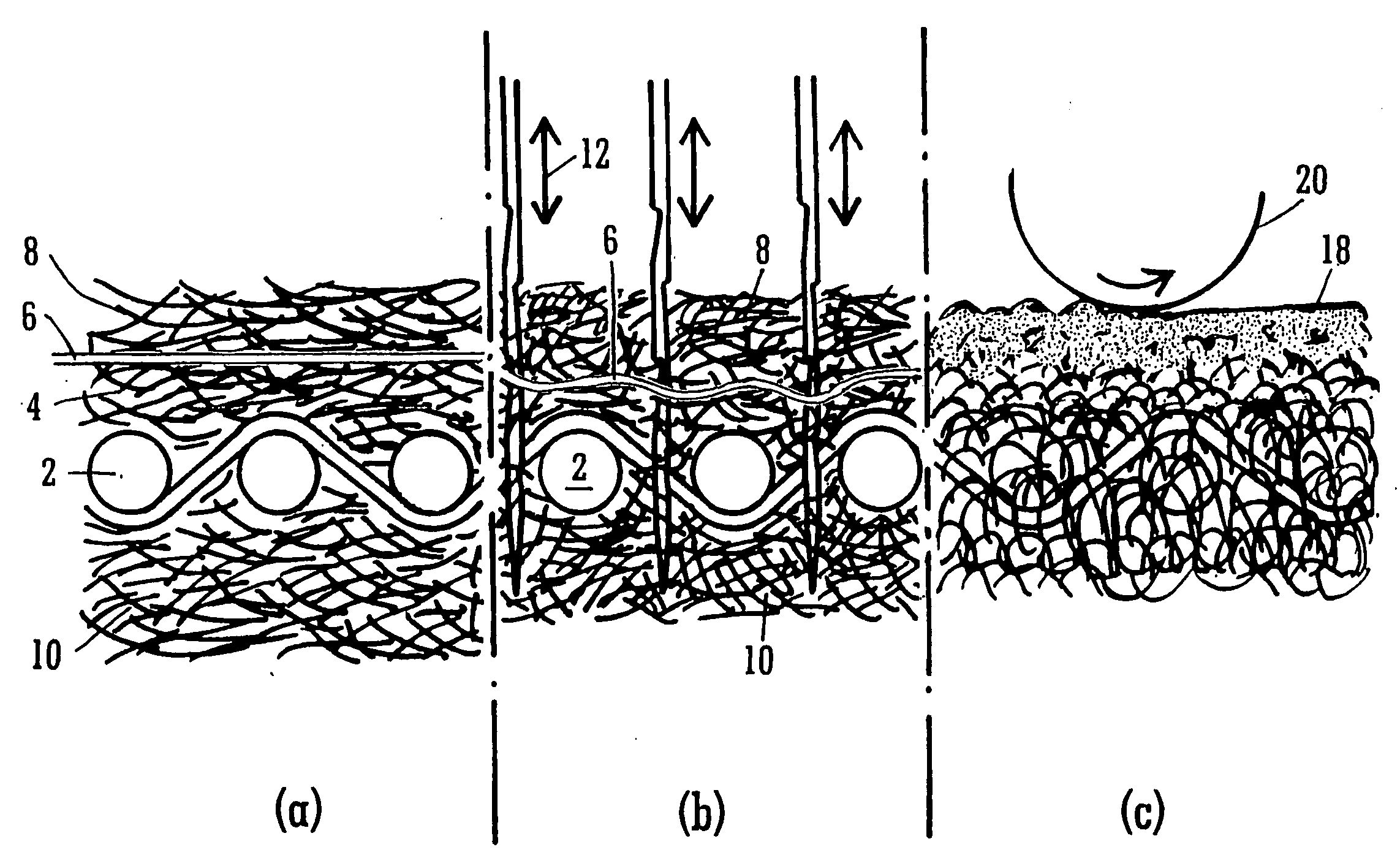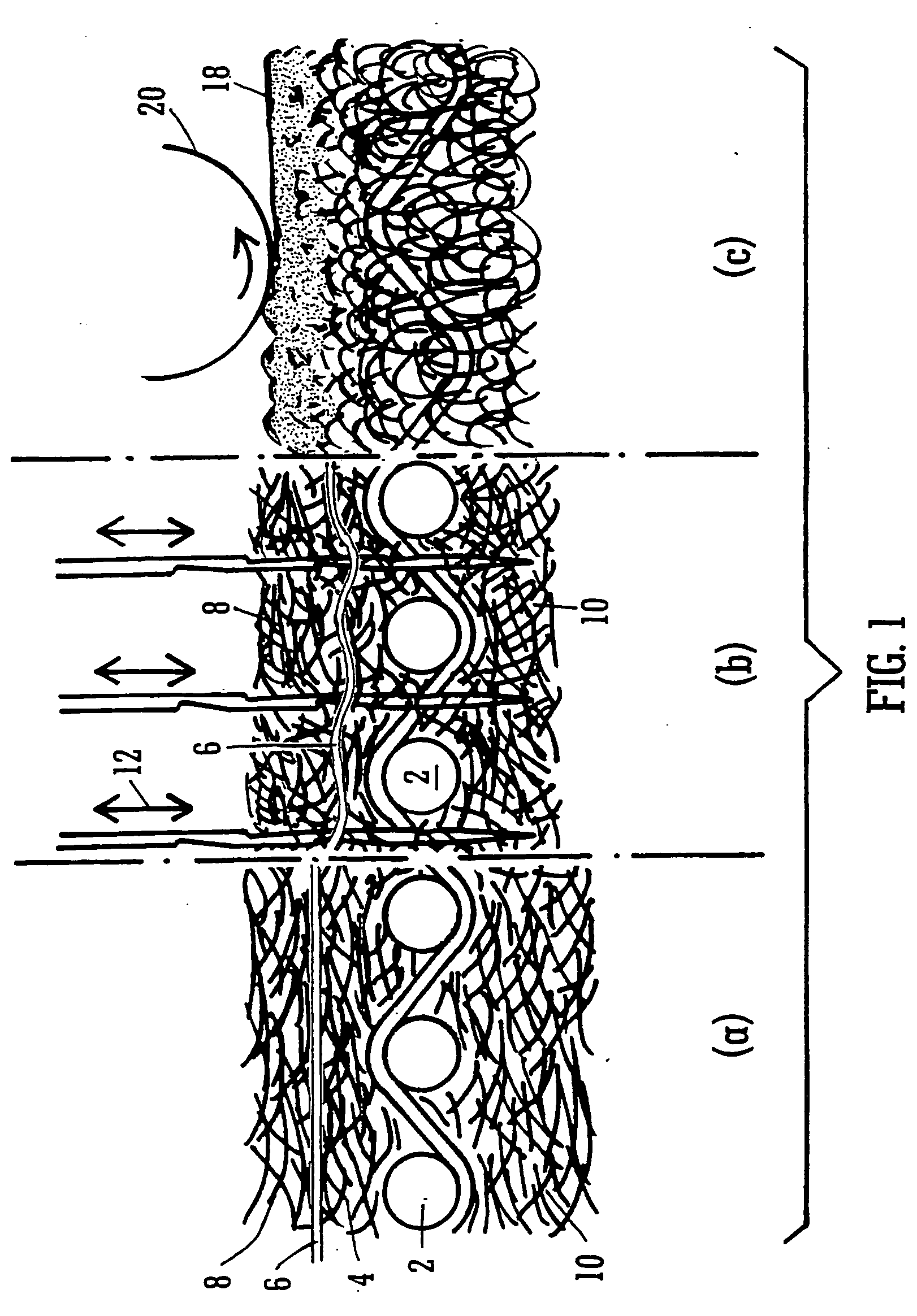Industrial fabrics
a technology of industrial fabrics and fabrics, applied in the field of industrial fabrics, can solve the problems of rewetting of paper sheets, fiber shedding and wear of industrial fabrics, etc., and achieve the effects of improving smoothness and wear resistance, improving resistance to rewetting, and improving resistance to fiber shedding
- Summary
- Abstract
- Description
- Claims
- Application Information
AI Technical Summary
Benefits of technology
Problems solved by technology
Method used
Image
Examples
Embodiment Construction
[0034] Referring now to the drawings and more particularly to FIG. 1(a), an industrial fabric constructed in accordance with an embodiment of the present invention includes a base layer 2, a first upper batt layer 4, a fine 0.051 mm (0.002 inch) thick elastomeric, a thermoplastic polyurethane film layer 6, an uppermost batt layer 8, and a lower batt layer 10. Polyurethane film layer 6 has a lower melting point than the other layers. These layers are joined, as best illustrated in FIG. 1(b), by needling 12 the layers together. Needling causes the individual fibers of the batt layers to intermingle and to link through base layer 2 to lock the layers together. Furthermore, the needling action perforates polyurethane film 6 to give a more open structure, through which the batt fiber is driven. As best illustrated in FIG. 1(c), the upper paper contacting surface of fabric 18 is heated at 200° C. using cylinder 20, this heat is sufficient to melt the lower melting point needled polyuretha...
PUM
| Property | Measurement | Unit |
|---|---|---|
| Thickness | aaaaa | aaaaa |
| Melting point | aaaaa | aaaaa |
| Elastomeric | aaaaa | aaaaa |
Abstract
Description
Claims
Application Information
 Login to View More
Login to View More - R&D
- Intellectual Property
- Life Sciences
- Materials
- Tech Scout
- Unparalleled Data Quality
- Higher Quality Content
- 60% Fewer Hallucinations
Browse by: Latest US Patents, China's latest patents, Technical Efficacy Thesaurus, Application Domain, Technology Topic, Popular Technical Reports.
© 2025 PatSnap. All rights reserved.Legal|Privacy policy|Modern Slavery Act Transparency Statement|Sitemap|About US| Contact US: help@patsnap.com



